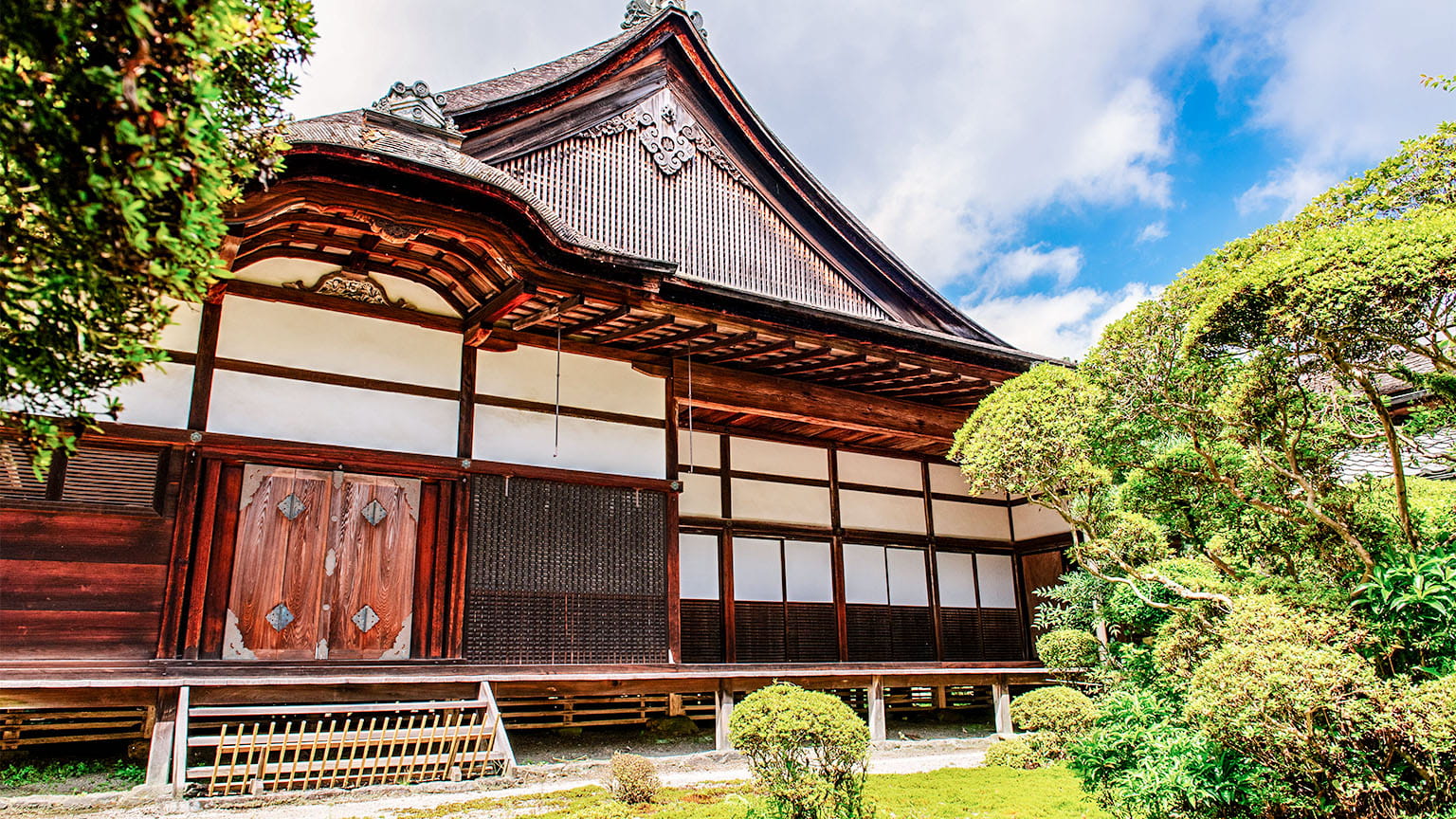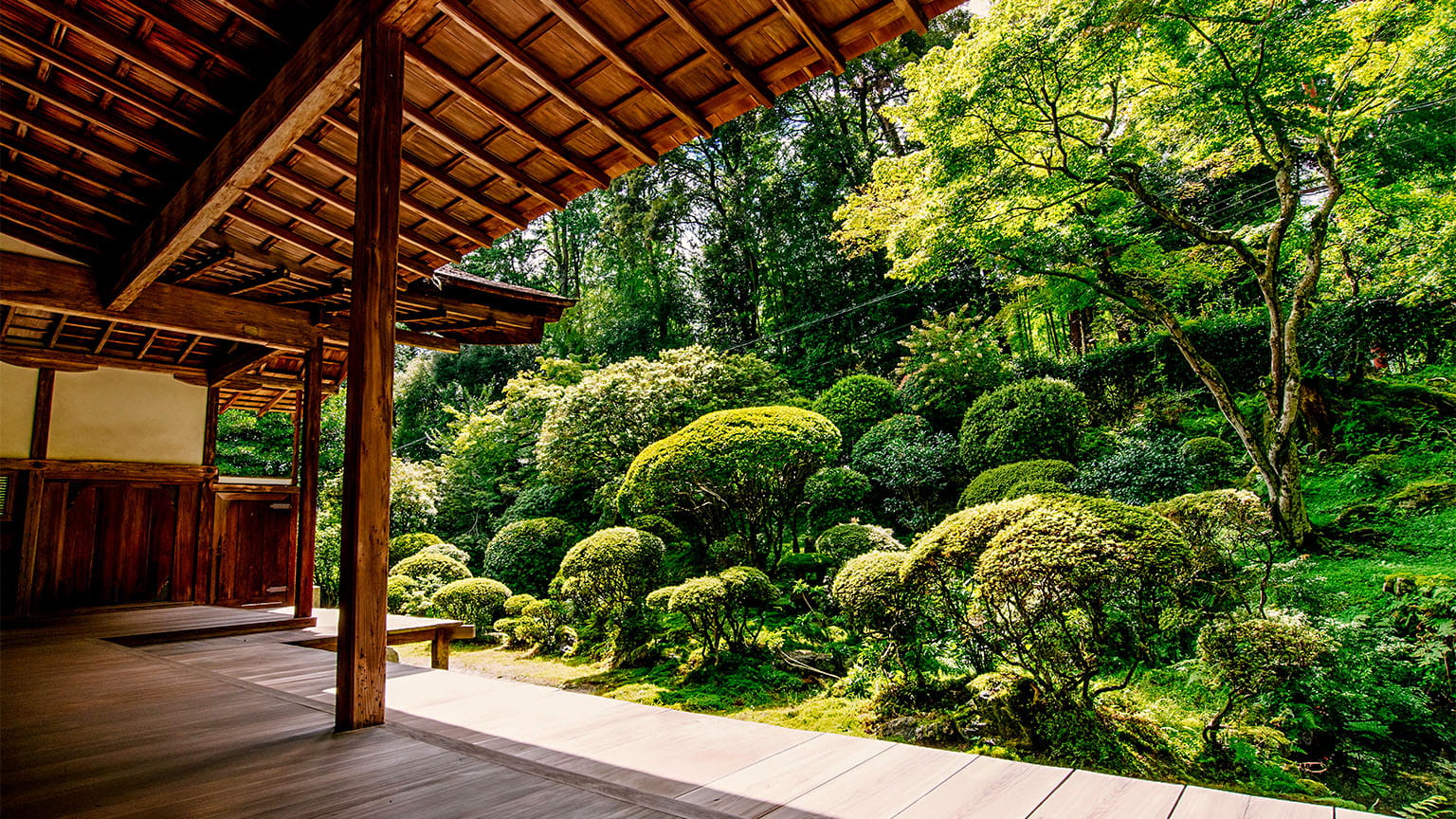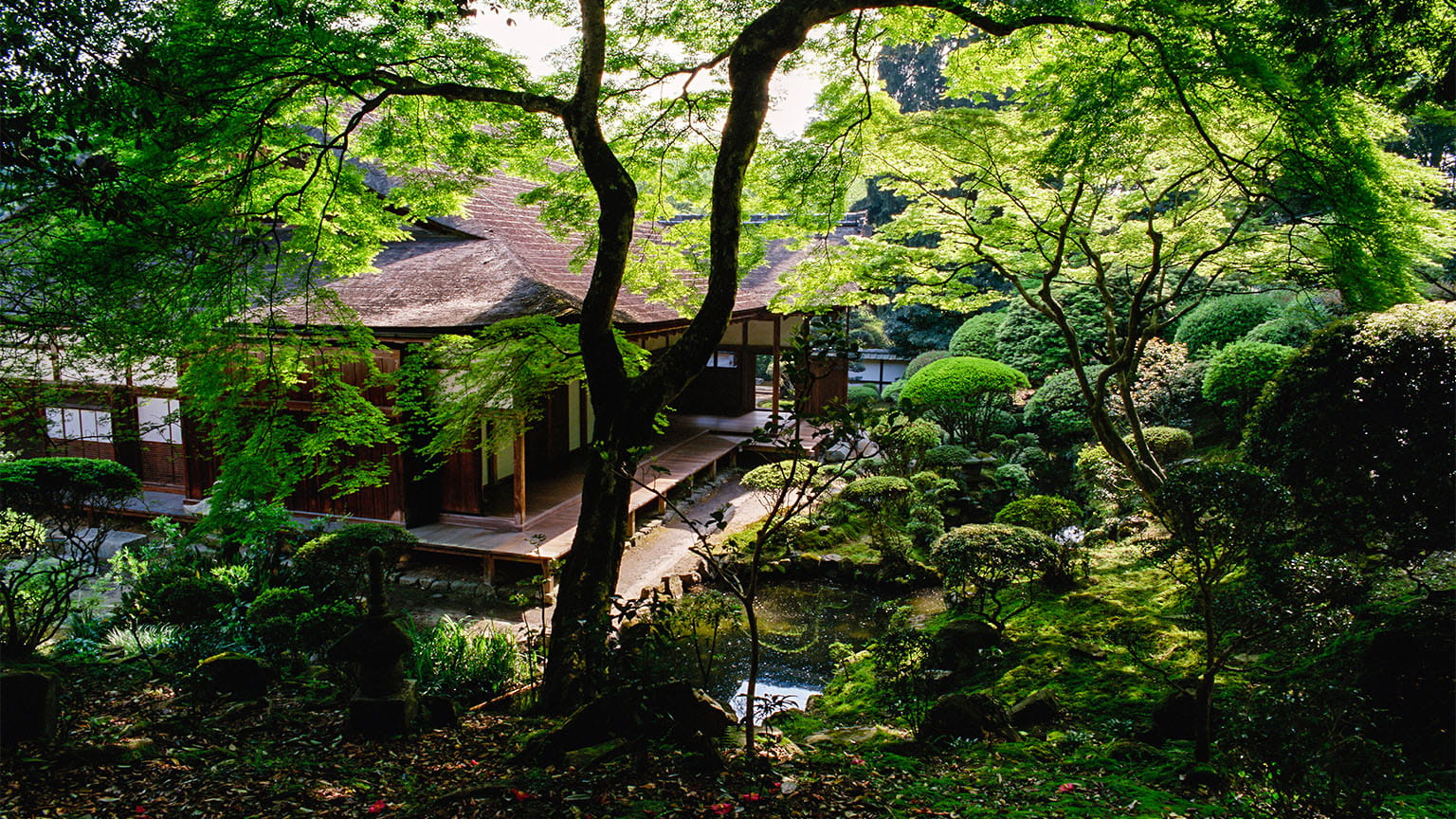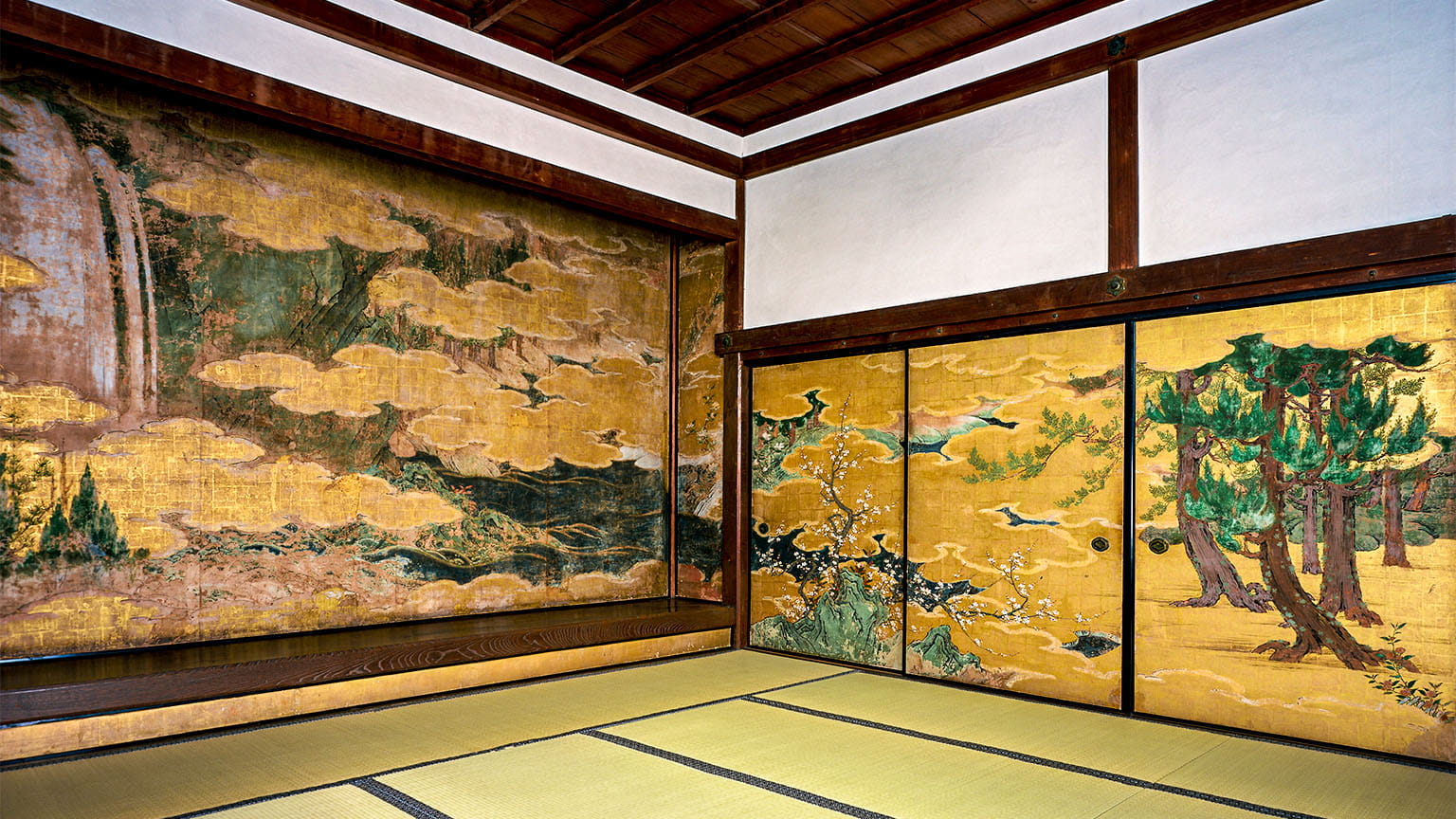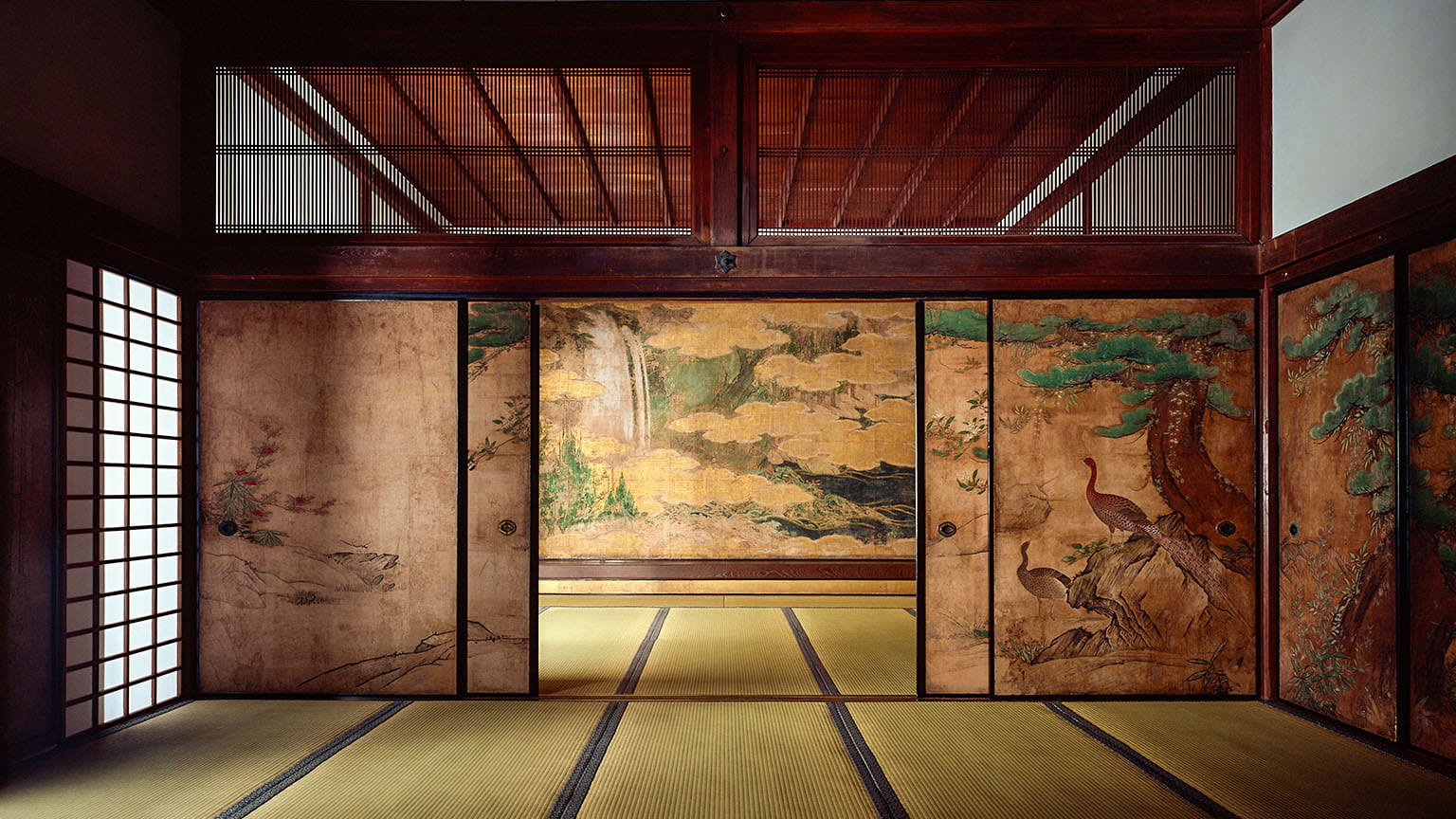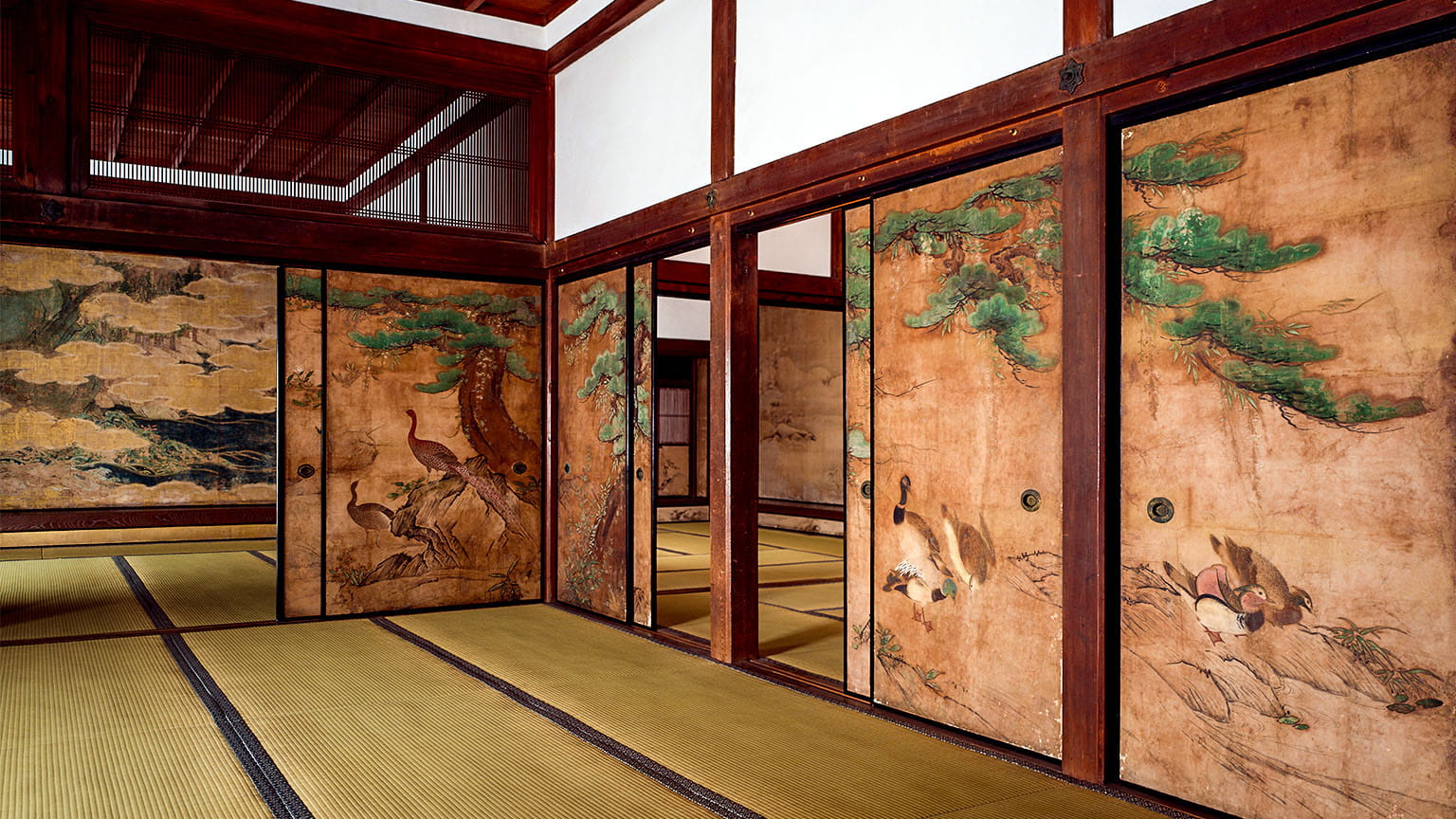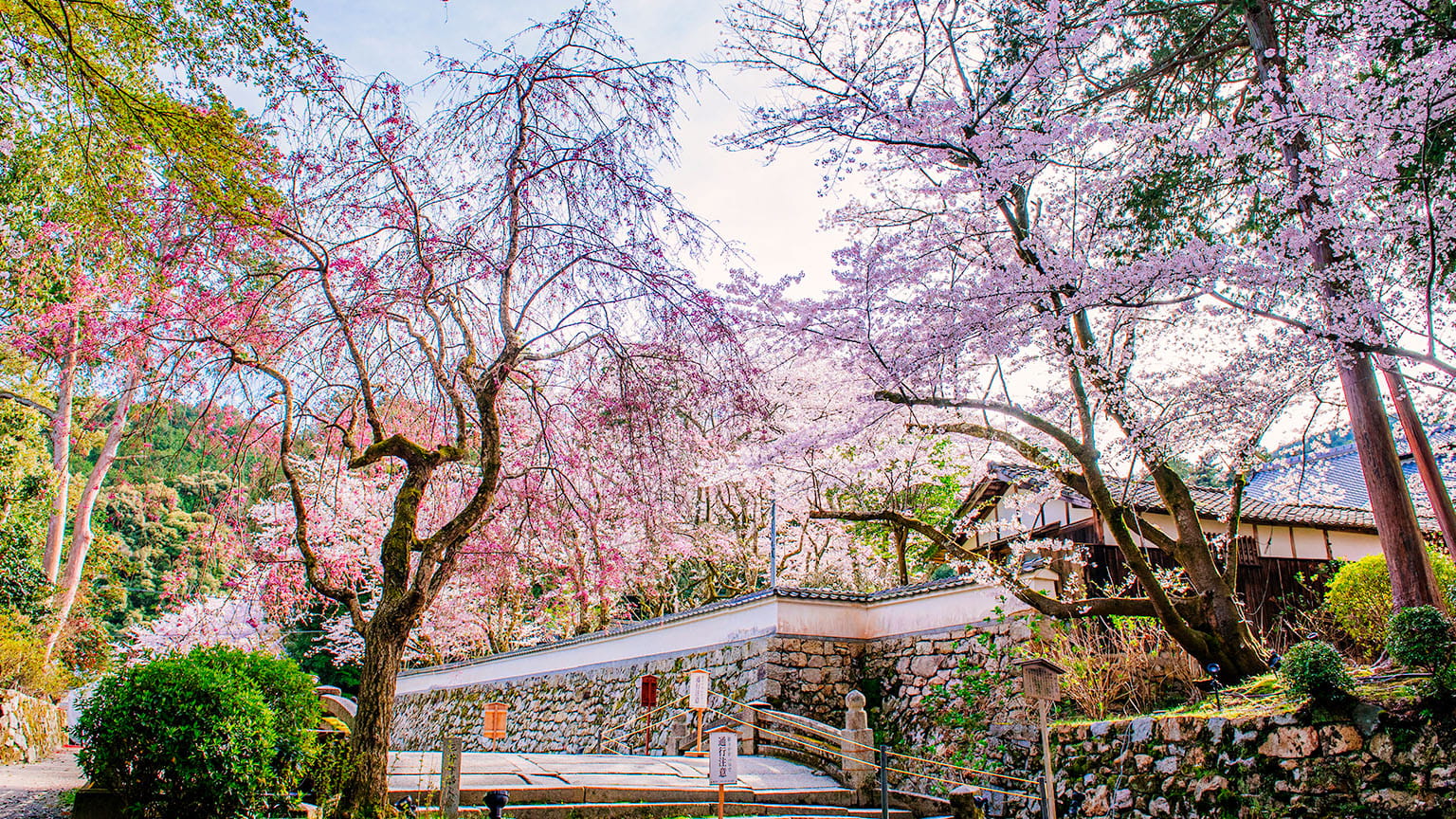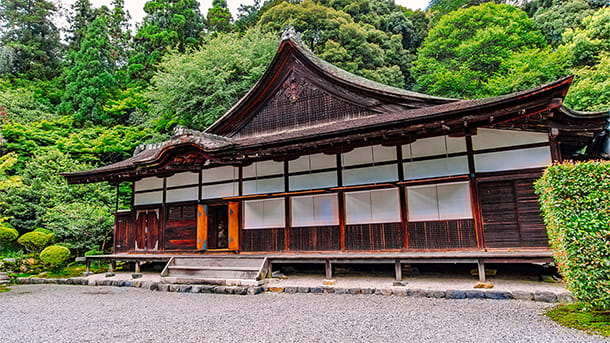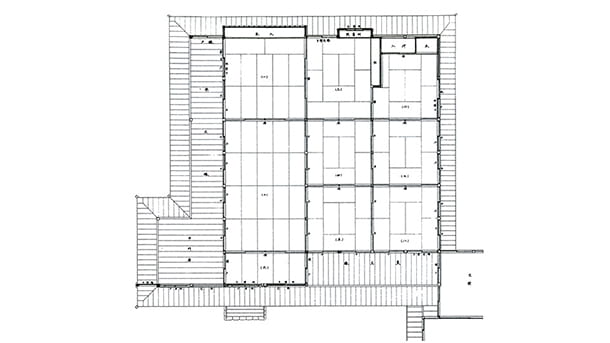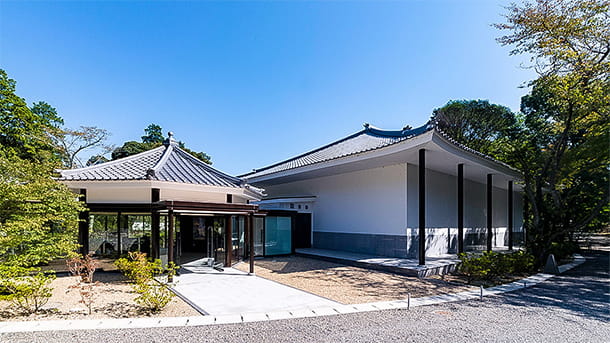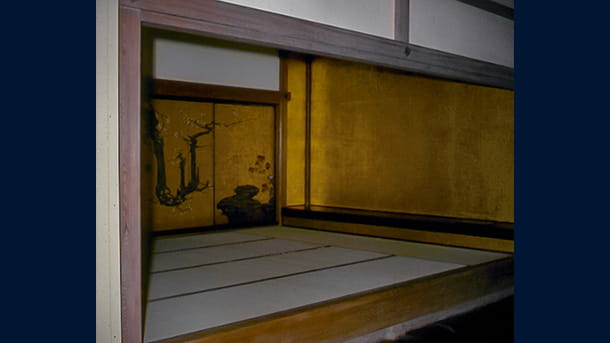“Toyotomi Hideyoshi”
A warlord in the Azuchi-Momoyama period. First, he served to Oda Nobunaga, and as soon as Nobunaga died due to the Honnoji Incident in 1582, he declared himself as the successor, defeated his enemies and unified the country. From 1583, Hideyoshi began the construction of Osaka Castle, the castle tower of which has a lavish five-story structure on the outside and an eight-story structure inside that was suitable for the supreme ruler. While he was called Hotaiko, luxurious Momoyama culture, including tea ceremonies and paintings of the Kano school, flourished.
Relations between Miidera Temple and Hideyoshi were generally favorable; however, in 1595, his later years, he suddenly imposed an order to Miidera Temple to confiscate all of the assets belonging to the temple. After Hideyoshi’s death in August 1598, Miidera Temple was restored by his legal wife, Kita no Mandokoro.
“confiscate all of the assets (Kessho)”
Kessho literally means a land lacking its owner. During the Kamakura and Muromachi periods (1185–1358), a land became ownerless when the shogunate confiscated it due to its owner’s offense. A land without a new owner. It also means confiscation of other assets including land.
“Mori Terumoto”
Mori Terumoto (1553–1625) was a warlord of the Azuchi-Momoyama period. A grandson of Motonari and a son of Takamoto. First, he served Ashikaga Yoshiaki and opposed Oda Nobunaga. After the Honnoji Incident, he reconciled with Toyotomi Hideyoshi and became one of the Council of Five Elders (five powerful feudal lords). He was the general commander of the western force in the Battle of Sekigahara, and when he was defeated, his domains were reduced, leaving him only two provinces, Suo and Nagato.
“shoin-zukuri”
Shinden-zukuri style was created in aristocratic society in the Heian period developed in accordance with the transition of society. From the Kamakura period onward, its architectural style was adapted to the life of samurai warriors who took the real power, and it was particularly modified for the necessity of having guests and ceremonies. It was also influenced by the architectural style of Zen Buddhism from China, and its unique style was gradually adopted for residential houses for military families as shoin-zukuri.
“The interior is divided into three rows of three rooms”
“Kano Mitsunobu”
Kano Mitsunobu (1565–1608) was the first son of Kano Eitoku (1543–1590) who led the artists’ world of the Momoyama period. He made a number of works with his father Eitoku while serving Oda Nobunaga and Toyotomi Hideyoshi. However, many of their works were lost. The screen paintings of the Kangakuin Reception Hall in Miidera Temple are one of his greatest works that show his style.
“cultural property storehouse”
“The Metropolitan Museum of Art in New York featured a reproduction ”


